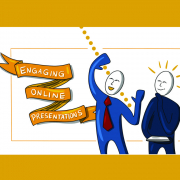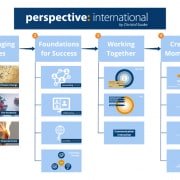How Customer Centricity becomes a key success driver
Putting the customer in the focus of entrepreneurial activity is nothing new. Not only with the definition of ‘marketing’ as an independent business discipline, companies systematically deal with the question who the customers are and what their needs are.
Nevertheless, in a study conducted by Qualtrics in cooperation with the German Marketing Association in December 2018, 54% of 300 German marketing managers surveyed stated that their company is only “somewhat” or even “not very customer-oriented” (in Horizont 2019 – the official Magazin for DMEXCO – available here as an ePaper in German language).
Other survey results also show that there is a lot of catching up to do in reality on the topics of customer centricity and customer experience.

In times of rapid change, it is particularly important to keep changes in the customers’ values and behavior consistently in view and to draw the necessary conclusions for the future of one’s own business activities. This is exactly the content of customer centricity.
Anchoring such an approach conceptually and culturally in the company can be very useful as a central theme, especially in times of rapid change.
How this can be achieved, I would like to show in 4 concrete proposals including valuable tips:
Tip #1:
Communicate the Principle
“The customer is king” is a well-known saying. “The Customer is Boss” sounds similar but means something different. It is an important principle at one of the companies I worked for, and all employees know it (The Game Changer, A.G. Lafley).
This principle plays a particularly important role in the development of product innovations (Customer-Centric Innovation). In general, business models of successful companies are usually based on ideas or visions that address customer problems and offer appropriate solutions (Customer-Centric Vision). Actually, this all sounds too banal to be written down.
Tip #2:
Make Customer Orientation Part of the Culture
However, corporate success can only be sustainable if changes in customer behavior, shifts in fundamental customer values and the effects on one’s own business are consistently kept in mind. Only those who adopt the thinking of their customers will know the real customer needs (=> Customer Understanding) and feel when and how these change.
For example, the first, small signs of developments such as “bio” and “vegan”, which are solid trends today and are creating entirely new markets, were already apparent many years ago. Environmental factors and customer behavior have changed with increasing dynamism. It is not only the task of the sales department to feel this, but ultimately a matter for leaders and should then also be reflected in an appropriate management and corporate culture.
A particularly prominent example in Germany of an entire industry that has not sufficiently taken into account this dynamic is the automotive industry with regard to alternative drive systems. The reasons for this are certainly manifold, the effects far-reaching.
How can this be put into practice? One suggestion: With an online customer meeting, you can currently set a special accent, whereby a personal meeting will always keep its charm. No matter how you live customer proximity – it will be seen in your organization and thus shapes the corporate and leadership culture. Many companies practice the very same thing. It is always worthwhile to further develop such approaches, to actively communicate and also to train them.
Tip #3:
Institutionalize Customer Centricity
With another, large manufacturer of branded goods I saw already many years ago that once a year a “day of the market” took place. On this day, all members of the board of directors and managers from other areas had or were allowed to go out into the trade and try their hand at selling the products to end consumers. This was certainly an important experience for the board members, but at the same time it was also a clear signal for everyone who witnessed it – especially for the customers.
A “day outside” can be infinitely instructive! Or invite customers to your company and celebrate it properly! And if none of this can be done personally at the moment, then create online events!
Tip #4:
Ensure lasting positive Customer Experience
Each touch point of customers with your products contains the chance of a lasting positive customer experience. This starts with how your company addresses potential customers, continues with the first product contact and the purchase, and ends with support and good service in the course of the use of the product. In the positive case, all this leads to a repurchase!
At this point, the automotive industry should now be mentioned as a role model in a positive sense. The customer experience starts with high-gloss brochure material, multimedia product presentations, exclusive showrooms and a pick-up event for example in a glass factory at the birthplace of the new vehicle. The customer experience continues with service appointments, which, depending on the brand, convey special value and exclusivity.
Similar approaches exist in other industries. In general, brand and flagship stores play a major role in communicating brand worlds and customer experience. The major fashion labels and luxury brands provide a series of examples. In the best case, products or brands succeed in accompanying the buyers through many phases of life. And then there are the special exceptions that remain present for many generations. I was able to work for one of these brands for almost 20 years: 4711, a brand that refutes all brand life cycle theories and has been successfully transmitting positive customer experiences for well over 200 years.
Turn potential buyers into first-time buyers, then satisfied and finally loyal customers. Loyal customers are the best brand ambassadors. In times of social media and unlimited electronic communication and interaction, this tip is more valuable today than ever!
Customer Centricity: Sustainable safeguarding of Corporate Success
However, as the current situation shows, even the best customer centricity approaches do not protect against surprises. It was theoretically possible that a pandemic could break out at some point. Nobody could have guessed that COVID-19 would affect all our lives right now, with far-reaching consequences.
Nevertheless, Customer Centricity is an important approach to detect changes in the market and in consumer behavior caused by a crisis as early as possible and thus to secure the success of the company in the long term.
Customer Centricity is therefore also an important element of the
➡️ diamond success compass,
which describes the success factors in business.

He founded perspective: international in 2013. He works as a strategic advisor, operative facilitator and interim manager with many years of experience in internationalization and international business development.






